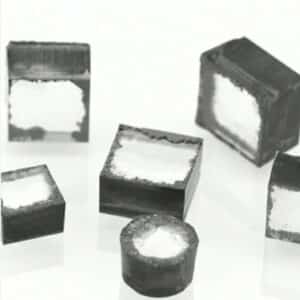Why wont we sell you a lab grown diamond?
Over the last year or so we have been increasingly asked about lab grown diamonds. They are also known as factory diamonds or synthetic diamonds.
Our reasons for not selling them are simple. They make great costume jewellery, but they are not suitable for sale in a quality jewellery shop.
Sure, they are chemically, physically and optically almost identical to natural diamonds and will look flashy and sparkle well. But there is no soul or identity to them. All the natural diamonds that Earth will ever create have been created. There will be no more. However factories producing synthetic diamonds can and are producing them in huge numbers and will continue to do so.
The misnomer regarding them being ethical falls over at the slightest enquiry. They are not environmentally friendly, equipment used to make the diamonds is immense, tones of steel and copper in each factory. Growing diamond is hugely energy intensive, crystalising carbon in to diamond requires massive amounts of energy. You can spare a thought for the workers at the factories too, wage and living conditions of the manufacturing countries are not always ideal.
You may see them presented as fine jewellery, shops selling them may compare them to natural diamonds and try and pretend they are the same. They may pretend it will make an ideal engagement ring or heirloom piece symbolising everlasting love, but the truth is they are cheap imitations and getting cheaper all the time.
There is a huge amount of misinformation surrounding their value. They are sold the same way as natural diamonds, according to the GIA system of colour and clarity and cutting. But the reality is you buy them from Indian and Chinese factories for $300-400 in 1ct sizes regardless of the colour or clarity. That, by the way, is down from $1000 two years ago.

Gemesis Diamond Factory
If it hasn’t started to happen already, then it will soon. Buyers will feel duped by the jewellery industry as the money they spent turns to dust, our hope is that those purchasers will realise it was the sellers and not the industry that duped them.
Like every new natural diamond imitant before, from the introduction of cubiz zirconia in the 70’s and moissanite in the 90’s they start out expensive and turn to valueless with a few unscrupulous dealers trying to make money on that trend. Factory diamonds are the same.
Natural diamonds have been prized for one thousand years, they will be prized for the next thousand.
Synthetic Diamonds
What are they?
Synthetic diamonds are diamonds that are created in factories. They are chemically very similar to natural diamonds and have all the optical and physical properties of natural diamonds.
There are two kinds of machines that make diamonds, HPHT (High Pressure High Temperature), which essentially heat and squeeze graphite until it crystalises in to diamond. And CVD (Chemical Vapour Deposition) which excites methane gas in to a plasma and lets it condense and crystalise on a seed plate in to diamond.

CVD diamond crystals
Generally HPHT diamonds are cut in to small ‘melee’, usually less than 0.20ct. CVD are used for larger diamonds up to 10ct.
What is their quality like?
As synthesis techniques have improved synthetic diamonds have gone from being mainly yellow (which were then treated to turn them white), to largely white (G+ colour), and largely free from inclusions (Vs+). Their cutting generally is also very good.
How much do they cost?
In 2017 wholesalers would sell (USD) a 1ct round E/Vs1 for $3500. Just two years ago, in 2021 a 1ct F/Vs1 lab grown diamond would cost $1100. Today they are $250.
How are they produced?
The diamonds are grown in large machines, roughly the size of a large kitchen oven, to as big as a large car. They are positioned in rooms with dozens and sometimes hundreds of machines. The machines take between a day and up to three or four weeks to create the diamond crystals using huge amounts of energy. The crystals are then removed from the machines and sent to cutting factories to be polished ready for jewellery.
In order to try and claim some sort of environmental benefit, manufacturers buy carbon credits to offset their carbon – similar to the way airlines do.
Why don’t we sell them?
- A gemstone by definition needs to be Beautiful, Durable and Rare. Synthetic diamonds are produced at the touch of a button and have effectively infinite supply. They are not rare and will never be prized like natural diamonds.
- They have been and still are horribly overpriced. Anyone buying a synthetic diamond five years ago has done 93% of their money. In fact there is no second hand market for synthetic diamonds. A synthetic diamond is worthless the moment it is bought. A synthetic diamond engagement ring is worth scrap gold on the second hand market.
- The mythical environmental advantage of synthetic diamonds is not supported when researched properly. The use of carbon credits is flimsy and producing countries do not use renewable power in any meaningful way, the workers wages and conditions in the counties of manufacture are poor.
- The methodology of sales is manipulative. Comparing the properties of a factory manufactured product (a diamonds colour and clarity) to a natural product and then pricing them based on that is unethical.



